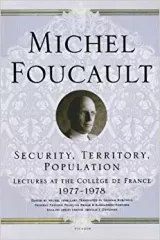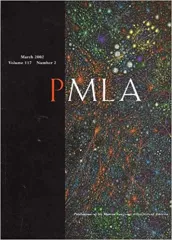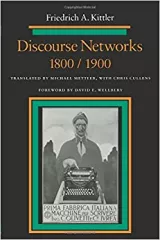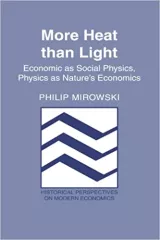My list is admittedly somewhat eclectic, for while roughly half of the books and articles below focus explicitly on romanticism and science, the other half focuses on the sciences without (in some cases) engaging Romantic literature at all. However, for the reasons I note below, I’ve nevertheless found even these latter to be of great use and inspiration for thinking about relationships among Romanticism and the sciences.
The Human Condition (Chicago, University of Chicago Press, 1998)
Authored by Hannah Arendt

Originally published in 1958, a year after the launch of the Sputnik satellite, The Human Condition is, among many other things, a searching reflection on what the modern, experimental sciences--i.e., those that first began to emerge in the seventeenth century--assume about the relationship of humans to truth, to the possibility of public, political action, and to our “human condition” as embodied beings who have been fitted via evolution to an existence on earth. Though Arendt does not focus on the eighteenth and early nineteenth centuries specifically, a number of authors from that period--e.g., Hume and Rousseau--play a key role in her book (and her account itself has an ambivalent relationship to the Greco-philia that was central to so many German Romantic authors). As someone who in general finds much of what happens in the sciences exciting and fundamental, this book tends to leave me uncomfortable and a bit disoriented, in a good way, for it suggests--in ways that Arendt herself leaves unresolved--a deep tension between the modern sciences and what she describes as the human condition.
Wordsworth and the Enlightenment: Nature, Man, and Society in the Experimental Poetry (New Haven, Yale University Press, 1989)
Authored by Alan Bewell

Though I could have selected here any of Bewell’s monographs (and many of his articles), I’ve nevertheless opted to include his first monograph, for not only does it do a fabulous job of reminding us of the expansive connotation of “natural philosophy” in the eighteenth century (which, for example, included the thought experiments of moral philosophy), it also emphasizes in convincing detail how deeply an engagement with science permeated Wordsworth’s poetic project. In a period in which single-author monographs are now increasingly less common, Bewell’s study reminds us of the work that, at least in principle, ought to be undertaken when one wants to make a case for the importance of the sciences for Romantic-era literary authors.
“The Living and its Milieu,” Grey Room 3 (2001): 7-31
Authored by Georges Canguilhem

Also available in Canguilhem, The Knowledge of Life, ed. Paola Marrati and Todd Meyers; trans. Stefanos Geroulanos and Daniela Ginsburg [New York: Fordham University Press], pp. 98-120): originally published in Canguilhem’s 1965 essay collection La Connaissance de la vie, this short and accessible article provides an extraordinarily smart overview of the concept of “milieu” from the late seventeenth to the mid twentieth centuries. Though Canguilhem includes a discussion of literature only in passing (and only with reference to Balzac), his account clarifies the multiple schemas by which the sciences--both those which we would now call “natural” and those that we would call “social” sciences--have sought to understand the relationship of living beings to their surrounding environments (both natural and social). Given that this issue was of central concern to many Romantic-era authors, Canguilhem’s essay provides many tools for thinking through the variety of ways in which one can consider this relationship (though the essay also arguably underestimates the diversity of Romantic-era approaches to this question).
Security, Territory, Population: Lectures at the College de France, 1977-78 (New York: Palgrave Macmillan, 2007)
Authored by Michel Foucault; Translated by G. Burchell; Edited M. Senellart

This text admittedly has been central to some of my recent work on eighteenth-century and Romantic-era concepts of population, but I am recommending it largely because Foucault’s discussions of eighteenth-century sciences of population are embedded within a larger, and extraordinarily interesting, account of the emergence of “liberalism” in the eighteenth century. Liberalism has, to date, been a topic of greater interest to Victorianists than to Romanticists, but (at least to my eyes) Foucault’s account of eighteenth-century liberalism--which, in his reading, is also a “naturalism”--suggests that Romanticists too ought to be very interested in this topic. Foucault does not deal with sciences such as physics or chemistry or even medicine per se, but is rather interested in the science of economics and more local medical debates such as that around the newly introduced technique of inoculation. Nor does Foucault himself make any reference in these lectures--or in the related lecture collections entitled “Society Must Be Defended” and The Birth of Biopolitics--to poetry or novels, so there is plenty of work to do in thinking about how, or whether, one can apply Foucault’s account to those Romantic-era texts that we tend to discuss. However, some help may come in the form of Frances Ferguson’s wonderfully concise article “Malthus, Godwin, Wordsworth, and the Spirit of Solitude”--included in E. Scarry, ed., Literature and the Body: Essays on Populations and Persons (Baltimore, MD: The Johns Hopkins University Press, 1988), pp. 106-124--which, though it appeared long before Foucault’s lectures were available, makes a strong case for the importance of the concept of population for Romantic-era literature, as well as Maureen McLane’s more recent Romanticism and the Human Sciences: Poetry, Population, and the Discourse of the Species (Cambridge: Cambridge University Press, 2006).
“The Monster in the Rainbow: Keats and the Science of Life," PMLA 117 (2002): 433–448
Authored by Denise Gigante

This is a fabulous essay that, on the one hand, makes a compelling case for a key shift in the meaning of “monstrosity” in the Romantic era (from an Enlightenment understanding of monsters as deviations from an ideal norm to a new understanding of monstrosity as the eccentric, excessive principle of life itself), and, on the other, reveals this new understanding of monstrosity at work in a variety of Romantic-era philosophical and texts. Gigante’s key example is Keats’s Lamia, but she also notes the importance of this understanding of the link between monstrosity and life in the work of authors as diverse as John Hunter, Erasmus Darwin, Immanuel Kant, and S. T. Coleridge. Not only has this essay fundamentally guided how I think about monstrosity in the Romantic era, but it also exemplifies a successful mediation between a specific case study and the larger discourse that that case study can illuminate.
Discourse Networks 1800/1900 (Stanford, CA: Stanford University Press, 1990)
Authored by Friedrich Kittler

Readers tend either to love or to hate Kittler’s work, and the specific reaction is itself often at least in part a function of how well one can tolerate Kittler’s distinctive combination of Foucault, Lacan, and cybernetic media theory. His reception in British-literature-oriented literary studies has also not been helped by the fact that he considers only German Romantic-era authors in the first half of this book (though his account of the “1900” episteme is more international). For me, the virtue of Kittler’s book is that he takes extraordinarily seriously the question of “media,” which for him refers to the variety of infrastructures by means of which information is stored, coded, and distributed. For Kittler, media enable and determine the nature of an “episteme,” and what differentiates the Romantic-era episteme (“1800”) from its successor (“1900”) is that the fact there are really only two media in the former period (voice and writing), whereas there is an explosion of media around 1900, and especially media that literally inscribe some aspect of reality (e.g., film and phonograph). In an extraordinarily exciting--and often vertiginous--account of the role of writing and “literature” in each episteme, Kittler provides a compelling way of accounting for links between central aspects of literature in each period and a variety of “sciences,” in a very general sense. His account in Discourse Networks 1800/1900, as well as in subsequent books--and in the work of so-called first- and second generation Kittlerian German media scholars who have followed his lead--should be of great interest to scholars interested in the questions of mediation that are at the heart of Clifford Siskin and Michael Warner’s recent anthology/manifesto, This is Enlightenment (Chicago: University of Chicago Press, 2010).
More Heat than Light: Economics as Social Physics; Physics as Nature's Economics (Cambridge: Cambridge University Press, 1989)
Authored by Phillip Mirowksi

Though a major book in the history of economic theory, the primary topic of More Heat than Light--the emergence of a heavily mathematized “neoclassical” economics at the end of the nineteenth century--may not immediately seem relevant to Romanticists. I nevertheless recommend at least the first half of this book to Romanticists, for three reasons. First, Mirowski provides an absolutely extraordinary account of the prehistory and history of the concept of “energy”--and, equally important, the principle of the conservation of energy--that runs from the late seventeenth to the early twentieth-centuries. The long first chapter that contains this account will likely be helpful to Romanticists interested in concepts of “live force,” energy, and fields, as well as those interested in authors such as Descartes, Leibniz, Maupertuis, Euler, Lagrange, Laplace, and Helmholtz. However, and second, the point of this account of theories of energy conservation is to consider how they relate to conceptions of economics from the early eighteenth to late nineteenth centuries. This section (chapter 4) will likely also be of considerable use to Romanticists interested in authors ranging from William Petty to the physiocrats to Adam Smith to Ricardo to Marx. Third, and finally, Mirowski develops an intriguing theoretical framework for exploring homologies between economics and physics that is decidedly not that of Foucault (whom he sees as insufficiently attentive to the importance of mathematics for mediating between fields) but rather an amalgam of earlier French philosophers of science (Duhem, Bachelard, Poincaré, Koyré, Meyerson). While I’m not completely convinced by this model, its considerable difference from those that literary critics tend to employ is refreshing, if only because it encourages reflection on our own more customary theoretical frameworks.
Leviathan and the Air-Pump: Hobbes, Boyle, and the Experimental Life (Princeton: Princeton University Press, 1985)
Authored by Steven Shapin and Simon Schaffer

This has been for a long time a key reference in both the history of science and science and technology studies (STS) literatures, and it is also a text that many literary critics of the seventeenth through nineteenth centuries know. However, it seems to me that more could be made of what Shapin and Schaffer describe as the “literary technologies” that were central to the experimental life that first emerged around Boyle, if only because both “literary” and “technologies” remain relatively undertheorized by Shapin and Schaffer in that book. A key supplement to this book is Bruno Latour’s We Have Never Been Modern (Cambridge, MA: Harvard University Press, 1993), in which Latour points out that the enormous critical purchase of Leviathan and the Air-Pump--Shapin and Schaffer’s success, for example, in revealing the centrality of the Hobbes-Boyle debate to the emergence of the modern sciences--depends, in a very peculiar way, on an unacknowledged acceptance of a Hobbesian understanding of politics.
